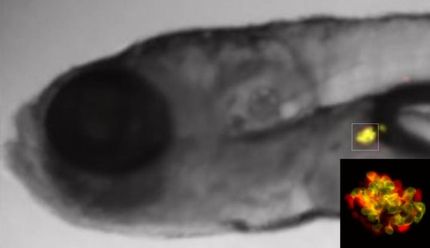A previously unknown coupling between obesity and diabetes
obesity increases the risk of developing diabetes, but nobody knows the details of why this is the case. Researchers at the Sahlgrenska Academy in Sweden have now identified a protein that may play a role in increasing the risk. The discovery may in the long term lead to new methods of preventing type 2 diabetes.
Most people who develop type 2 diabetes are overweight. Fat can accumulate in the muscles and liver of an obese person, leading to cell damage that in turn leads to a defect in the signalling from insulin. The result is an increase in the blood sugar level, and diabetes develops.
"The faulty storage of fat in the muscle cells interferes with the signal from the insulin that should stimulate increased absorption of sugar by the cells. The fat is stored in the cells in the form of fat droplets, and we have studied in detail how these are formed and how they grow. This has enabled us to show how the insulin signal is disrupted", says Professor Sven Olof Olofsson, director of the Wallenberg Laboratory at the Sahlgrenska Academy.
The research project used several advanced microscopy techniques to study lipid droplets in cultured muscle cells. It became clear that the lipid droplets merged with each other inside the cell by a process that involved a protein known as "SNAP23". This protein has another, independent, function - that of passing the insulin signal onwards into the cell.
"It appears that the SNAP23 is being 'stolen' from the insulin signalling process when the cell starts to pack fat, and this causes the defect that subsequently leads to diabetes. If we can find out more about how this works in detail, we may be able to influence the process and protect patients from developing diabetes", says Pontus Boström, PhD student at the Sahlgrenska Academy.
Further research will be necessary before the results can be tested in patients.
Original publication: Pontus Boström, Linda Andersson, Mikale Rutberg, Jeanna Perman, Ulf Lidberg, Bengt R. Johansson, Julia Fernandez-Rodriguez, Tommy Nilsson, Jan Borén and Sven-Olof Olofsson; "SNARE proteins mediate fusion between cytosolic lipid droplets with implications for insulin sensitivity"; Nature Cell Biology.
Most read news
Other news from the department science

Get the life science industry in your inbox
By submitting this form you agree that LUMITOS AG will send you the newsletter(s) selected above by email. Your data will not be passed on to third parties. Your data will be stored and processed in accordance with our data protection regulations. LUMITOS may contact you by email for the purpose of advertising or market and opinion surveys. You can revoke your consent at any time without giving reasons to LUMITOS AG, Ernst-Augustin-Str. 2, 12489 Berlin, Germany or by e-mail at revoke@lumitos.com with effect for the future. In addition, each email contains a link to unsubscribe from the corresponding newsletter.
Most read news
More news from our other portals
Last viewed contents
Beckman Coulter to Acquire Diagnostic Systems Laboratories, Inc. - Company Seeks to Gain Leadership in Specialty Endocrine Testing
QIAGEN completes second U.S. submission for companion diagnostic to guide treatment decisions in colorectal cancer






















































